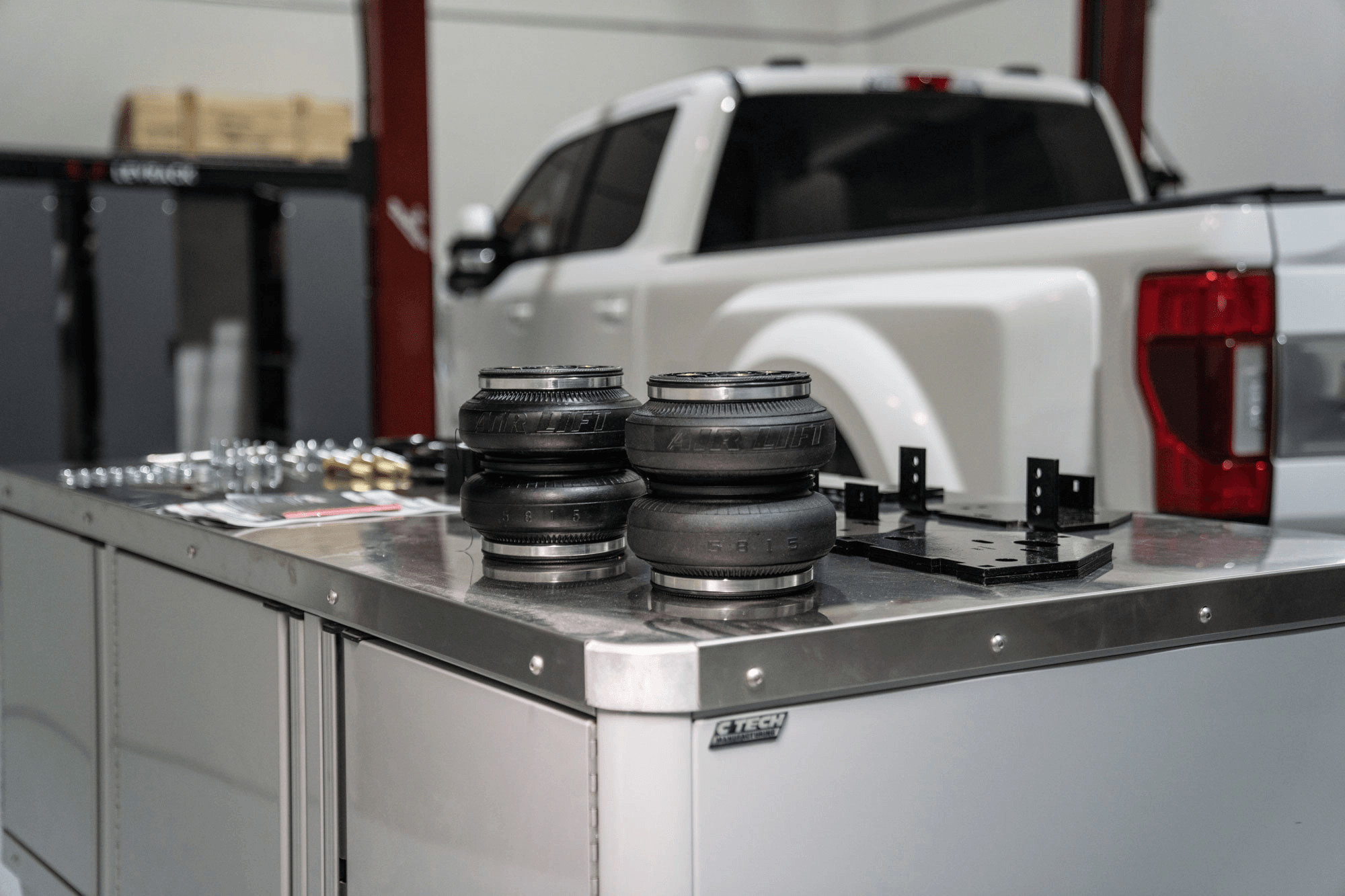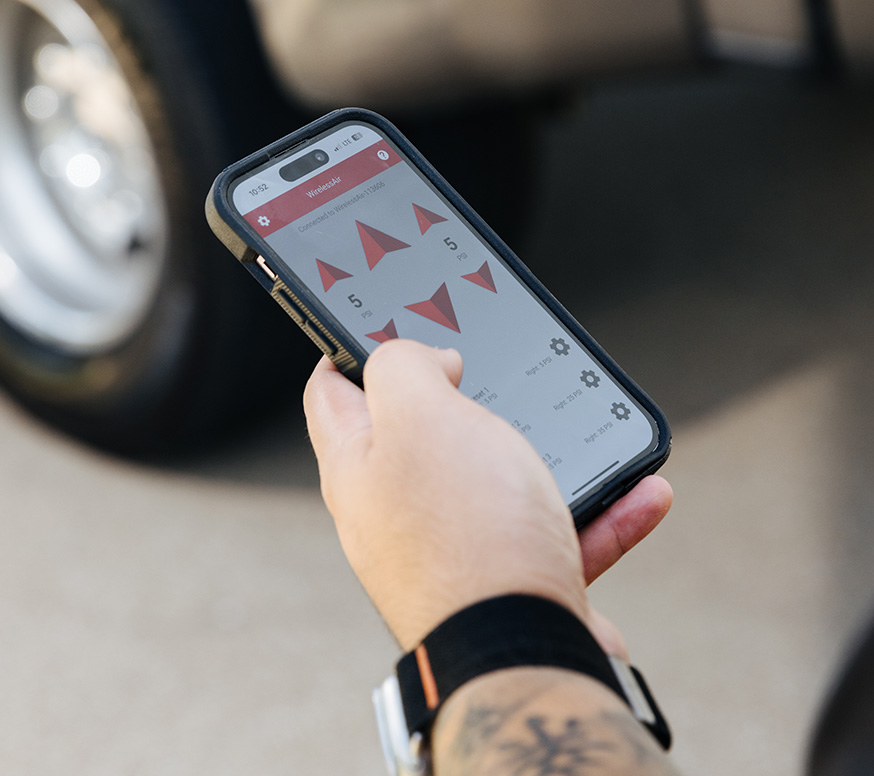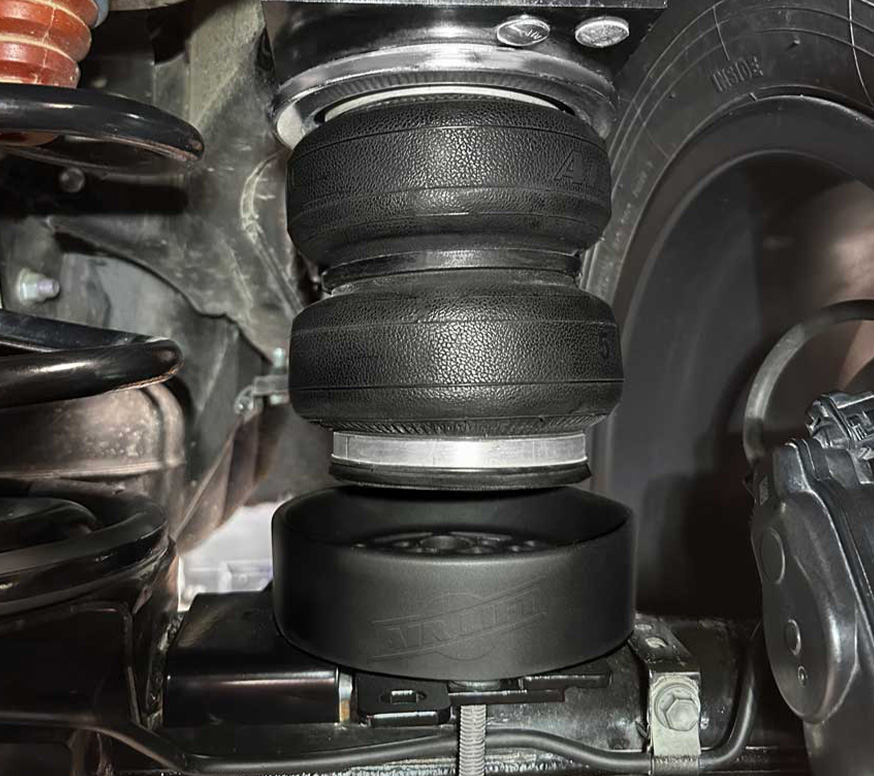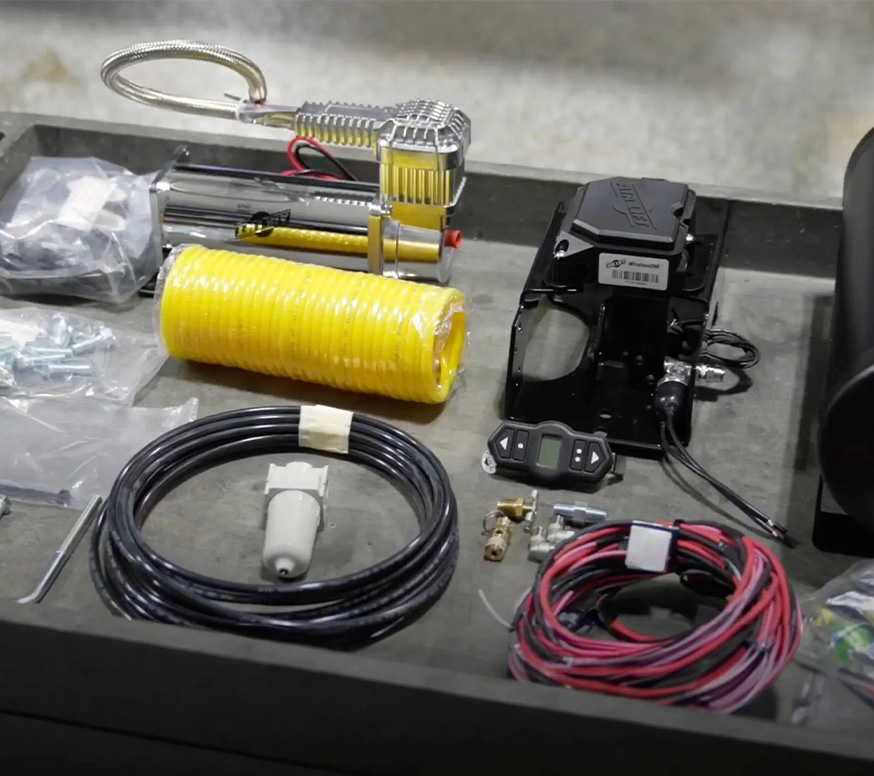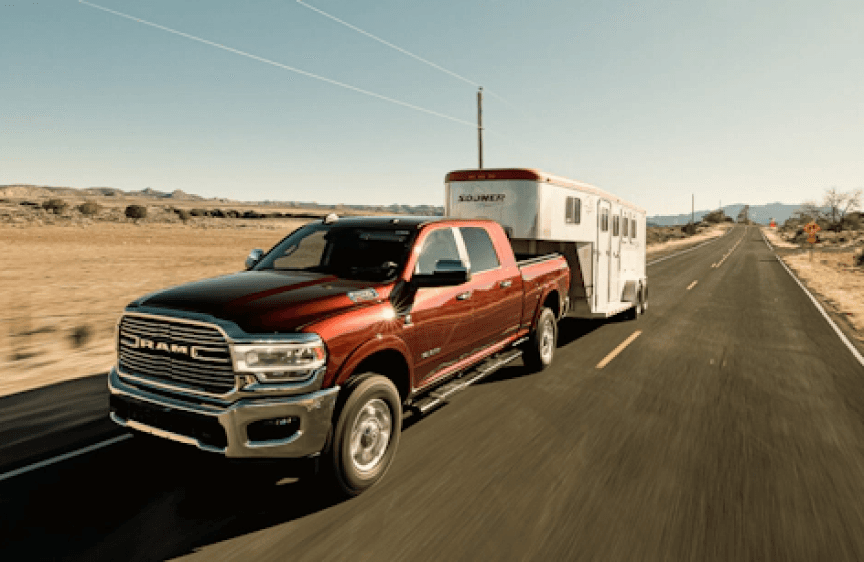
Air Suspension Terminology
11/11/2013
See our growing list of air suspension terms and definitions:
Air Bag
See air spring.
Air Compressor
A device that compresses and pressurizes air. Used to inflate air springs.
Air Fitting
The device which allows the transfer of air within the air system.
Air Line
Tubing run from the air source (compressor or valve) to the air springs.
Air System
A collective set of air components necessary to allow for an air spring to function.
Air Spring
An air spring is a rubber and fabric bladder that holds air pressure to support a load and isolate passengers and cargo from the shock of motion caused by road irregularities. As the air pressure increases, the air spring can support more load while the spring rate increases. The larger the air spring, the greater the maximum load it can support.
Base Curb Weight
The weight of the vehicle including a full tank of fuel and all standard equipment. It does not include passengers, cargo or any optional equipment. Ask your dealer for this weight.
Bead Wire
A solid or flexible wire molded into the each end of a Bellows flexible member.
Bellows
The bellows air springs have one or two convolutions in the flexible member (flex member). The bellows also can utilize a crimp design. In a crimp design, the flexible member is attached to the end cap by pinching the flex member between the end cap and a mechanical crimp ring. The crimp ring is swaged around the end cap to the proper diameter.
Cargo Weight
Includes all weight added to the Base Curb Weight, including cargo and optional equipment. When towing, trailer tongue weight also is part of the Cargo Weight.
Coil Spring
Spring steel rod heated and wound into a cylinder or slight cone shape. Most passenger cars have coil springs all around while pickups and SUV’s often have them in the front suspension.
Crimp Ring
The device which mechanically attaches the flexible member to the end cap.
Design Height
The selected operational height of the air spring when mounted and inflated.
End Cap
The end closure of an air spring consisting of an upper and lower.
Free Standing Height
The overall height of the air spring at an internal pressure of 40 psi.
Girdle Ring
A rubber covered bundle of wires that restricts the diameter of the flexible member at the intersection of the convolutions.
Gross Axle Weight (GAW)
The total weight placed on each axle (front and rear). To determine the Gross Axle Weights for your vehicle and trailer combination, take your load vehicle and trailer to a scale. With the trailer attached, place the front wheels of the vehicle on the scale to get the front GAW. For rear GAW, weigh the towing vehicle with the trailer attached, but with just the four wheels of the vehicle on the scale. You get the rear GAW by subtracting the front GAW from that amount.
Gross Axle Weight Rating (GAWR)
The maximum weight an axle can carry (front or rear), which includes trailer weight and anything else that is being supported by an axle. The GAWR should never be exceeded. These numbers are shown on the Safety Compliance Certification Label.
Gross Combined Weight (GCW)
The weight of the loaded vehicle (GVW) plus the weight of the fully loaded trailer. It is the actual weight obtained when the vehicle and trailer are weighted together on a scale.
Gross Combined Weight Rating (GCWR)
The maximum allowable weight of the towing vehicle and the loaded trailer – including all cargo and passengers – that the vehicle can handle without risking costly damage. (Important: the towing vehicle’s brake system is rated for operation at the GVWR – GCWR. Separate functional brake systems should be used for safe control of towed vehicles and for trailers weighing more than 1,500 lbs. When loaded.) The measured GCW must never exceed the GCWR.
Gross Vehicle Weight (GVW)
The Base Curb Weight plus actual Cargo Weight plus passengers. It is important to remember that GVW is not a limit or specification. Tt is the actual weight that is obtained when the fully loaded vehicle is driven onto a scale.
Gross Vehicle Weight Rating (GVWR)
The maximum operating weight of a vehicle as specified by the manufacturer. This number includes the vehicle’s chassis, body, trailer tongue weight, engine, engine fluids, fuel, accessories, driver, passengers and cargo but excludes trailer weight. The GVWR should never be exceeded as many other components like brakes, transmission, differentials, axles and tires are only designed to handle that amount of weight. This number – along with other weight limits – is shown on the vehicle’s Safety Compliance Certification Label.
Jounce
The compression of the suspension or air spring below its design height.
Jounce Bumper
A cushioning device, made of urethane foam or natural rubber, that limits the upward movement of the wheels and suspension to prevent harsh jarring.
Load Versus Pressure
The amount of load an air spring will carry per a given amount of air pressure.
Leaf Spring
Several layers of spring steel metal strips bracketed together in an arc shape over/under an axle to form a long narrow spring. Most commonly found on the rear suspension of pickup trucks.
Leak Test
After inflating the air spring to a maximum pressure, spray all connections and any inflation valves with a solution of 1/5 liquid dish soap and 4/5 water to check for leaks. Spot leaks easily by looking for bubbles emanating in the soapy water.
Manifold
An advanced device that regulates and distributes compressed air.
Maximum Compressed Height
The shortest recommended height of the deflection of the air spring assembly.
Maximum Extended Height
The maximum recommended operational height of the air spring assembly.
Maximum Flexmember Diameter
The largest diameter the air spring assembly will attain at an internal pressure of 100 psi.
Maximum Loaded Trailer Weight
The highest possible weight of a fully loaded trailer the vehicle can tow, based on a minimum towing vehicle GVW. It assumes a towing vehicle with any mandatory options, no cargo, and driver only. Weight of additional options, passengers, cargo and hitch must be deducted from this weight.
Meniscus
The portion of the flexmember of a sleeve type air spring, that curves under in its transition from a working diameter to the piston diameter.
Normal Ride Height (NRH)
The original unloaded vehicle height as it comes from the factory.
Payload
How much weight a vehicle can carry in both passengers and cargo (including trailer tongue weight). This is different than GVWR in that payload does not include the curb weight of the vehicle.
Piston
A rigid structure over which the flexible member rolls.
PSI
Pounds per square inch is a unit of pressure or of stress. It is the pressure resulting from a force of one pound-force applied to an area of one square inch.
PSIG
Pounds per square inch gauge is the pressure measured by an air gauge.
Rebound
The extension of the suspension or air spring above its design height.
Roll Plates
A device positioned between the end cap and mounting surface in order to stabilize the air spring.
Sag
See squat.
Schrader Valve
A threaded pneumatic valve typically connected to air line used for filling air springs with air. This valve is also used on the tires of almost every motor vehicle worldwide.
Sleeve
The sleeve type rolling lobe employ a flexible member without an internally molded bead. The flexible member is joined to the end cap by pinching the flex member between the end cap and a mechanical crimp ring. The crimp ring is swaged around the end cap to the proper diameter. The sleeve design generally has less load carrying capacity compared to the bellows, however offers more usable stroke.
Spring Rate
The pound force required to deflect a spring one inch. Can be thought of as the stiffness of a spring. A higher spring rate requires more force to compress or stretch than a lower spring rate. The spring rate of an air spring is controlled by the design of the spring and the air pressure held in the spring. An air spring holding a higher air pressure would have a higher spring rate than the same air spring holding a lower pressure.
Squat
Improper weight distribution, often from towing or hauling a heavy load, causes the back end of the vehicle to sit lower than the front. This can cause steering wander, longer braking distances, and tire wear.
Swaged Crimp Design
Where a flexible member is compressed between the end cap and crimp ring, by reducing the diameter of the crimp ring.
Threaded Air Fitting Insert
A brass insert with an o-ring, which is placed in the end cap through the means of interference fit.
Tongue Weight (TW)
The vertical weight applied to the hitch ball by a trailer or other towable equipment. Tongue weight is included in both GVWR and payload capacities.
